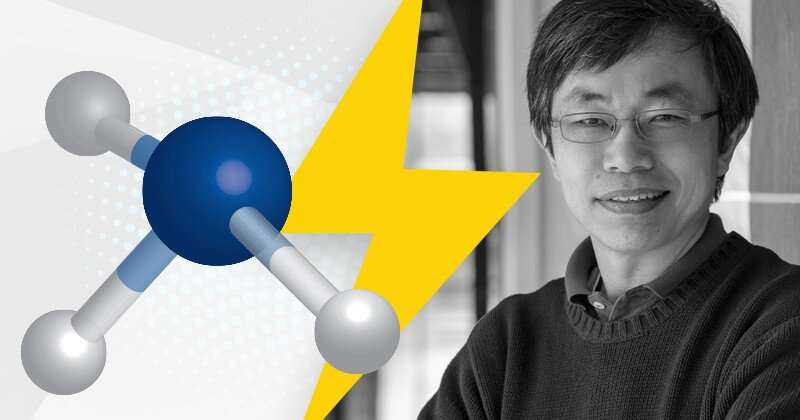Ammonia for fuel cells

Fuel cells are pollution-free power sources that convert chemical energy to electricity with high efficiency and zero emissions. Fuel cell cars, trucks, and buses would allow people to travel long distances with convenient refueling and less of a carbon footprint.
Researchers at the University of Delaware are working on technology to make fuel cells cheaper and more powerful so that fuel cell vehicles can be a viable option for all someday. Traditional fuel cell research involves hydrogen fuel cells, but the UD researchers are engineering fuel cells that utilize ammonia instead.
In a new analysis published in the journal Joule, a team of engineers at the Center for Catalytic Science and Technology found that among fuels produced from renewable energy, ammonia has the lowest cost per equivalent gallon of gasoline.
"As a nitrogen-based liquid fuel, ammonia is cheaper to store and distribute than hydrogen and avoids the carbon dioxide emissions of other liquid fuels, which are expensive to capture" said Brian Setzler, one of the lead authors and a postdoctoral associate at UD.
The challenges, however, are that ammonia does not work in a proton exchange membrane fuel cell; and that ammonia is more difficult to oxidize than hydrogen, which causes ammonia fuel cells to produce less power than hydrogen fuel cells. The team solved the first problem by using hydroxide exchange membrane fuel cells that have been studied for over a decade in the lab of Yushan Yan, a Distinguished Engineering Professor at UD. Assisted by a $2.5 million grant from the REFUEL program of the Advanced Research Projects Agency-Energy (ARPA-E) in the U.S. Department of Energy, the UD team engineered a fuel cell membrane that can operate at higher temperatures to speed up ammonia oxidation. They also identified catalysts that were not poisoned by ammonia.
"With these improvements, we have demonstrated a new direct ammonia fuel cell prototype with a peak power density of 135 milliwatts per square centimeter, which closes much of the performance gap compared to hydrogen," said research associate Yun Zhao, the lead author of the paper who has been working on direct ammonia fuel cells since 2016.
More information: Yun Zhao et al. An Efficient Direct Ammonia Fuel Cell for Affordable Carbon-Neutral Transportation, Joule (2019). DOI: 10.1016/j.joule.2019.07.005
Journal information: Joule
Provided by University of Delaware




















